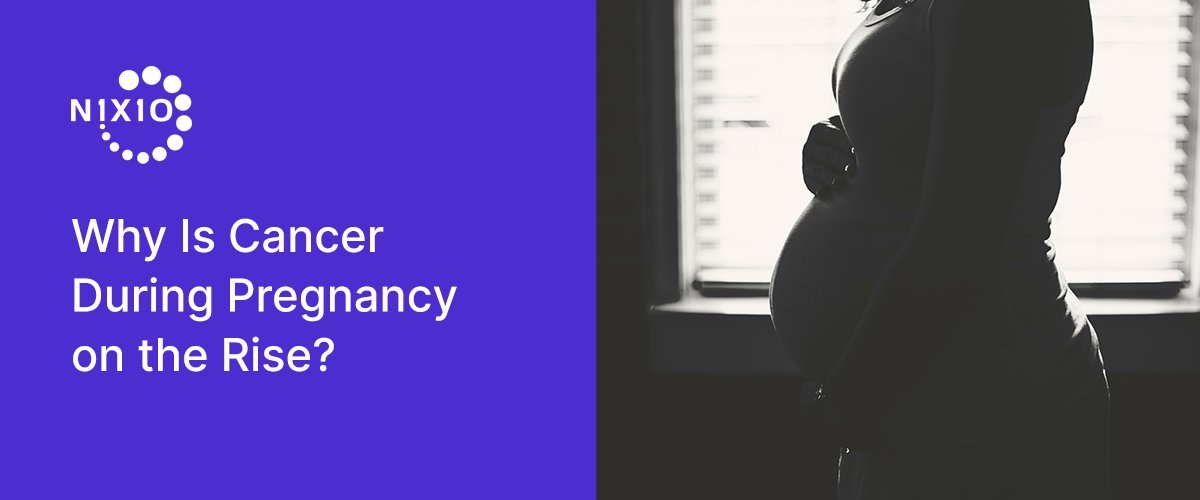Increasing numbers of women are being diagnosed with pregnancy-associated cancer (PAC), commonly defined as cancer occurring during pregnancy and the first year post‐delivery.
The broad range of cancers presenting during and after pregnancy, malignant melanoma, breast and cervical cancer, the three most common cancer types of PAC, suggests a variety of contributing factors. In high socioeconomic countries women are having children later in life and the biggest risk factor for many cancers is increasing age. Another factor may be the rising use of prenatal genetic screening tests in early pregnancy. These analyze DNA derived from the mother’s blood to detect chromosomal abnormalities in the developing fetus. These tests can also give information about the mother’s chromosomes. This has led to diagnoses of Hodgkin disease and colorectal cancer in pregnant women without symptoms. Estrogen and progesterone are two important hormones for growth and development of breast tissue and the support of a healthy pregnancy. These may also contribute to cancer development, particularly breast cancer. However, it’s not clear whether this is linked to rising rates of pregnancy associated cancers. Nulliparity and smoking have also been listed as risk factors for PAC.
PAC is particularly challenging for the patient and attending physicians, as, depending on the trimester of diagnosis, certain diagnostic procedures and treatments must be avoided due to maternal and fetal risks. For this reason, it has been argued that cancer diagnosed during pregnancy should be studied separately from post‐delivery cases, which are also affected by hormonal and physiological changes but not complicated by treatment restrictions. In addition, symptoms of cancer may be misinterpreted during pregnancy, which may delay the diagnosis until after delivery. Therefore, it is reasonable to assess also the incidence of cancer shortly after delivery in the same context as pregnant cases, as these cancers may have been detected earlier if not masked by pregnancy.
What happens after a diagnosis? Surgery can usually be undertaken during any trimester depending on where the cancer is located. Radiotherapy needs careful planning because the impact of radiation on the fetus depends on the developmental stage, where the radiation is applied to the body, and the dose. Chemotherapy should be avoided in the first trimester due to potential toxic effects on the fetus. But it can usually be given in the second and third trimester. Chemotherapy should be avoided within three weeks of the birth to reduce the chance of bleeding and infection in the newborn, who may also have a weakened immune system from the chemo. More targeted immunotherapies are generally given to the mother after she’s given birth. Depending on the treatment, she may be advised not to breastfeed. That’s because these drugs can pass from the mother to the baby through the breastmilk.
What happens to the babies? No data shows an increase in the rate of newborns dying around the time of birth if they were born to mothers with a PAC. There are, however, more planned preterm births. This is because women are offered an induction of labor and/or a caesarean to facilitate cancer treatment for the mother, while reducing treatment-related risks to the unborn child. There are also higher rates of babies born with a low birth weight and low Apgar scores (indicators of a baby’s condition shortly after birth) – possibly related to being born pre-term.
There is much to learn about what’s behind the increasing rates of PAC, and what women diagnosed with these cancers can expect. So far, age on its own does not fully explain the higher incidence. Combining cancer and obstetric data in national databases would allow for further research, the development of clinical guidelines to screen for cancers during and after pregnancy and would help evaluate responses to screening programs or therapies in the future.


